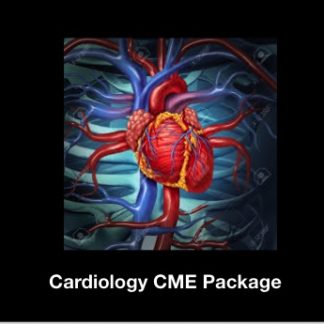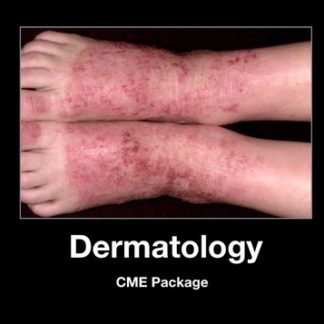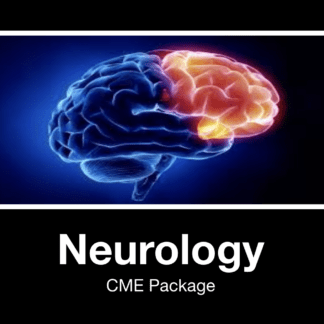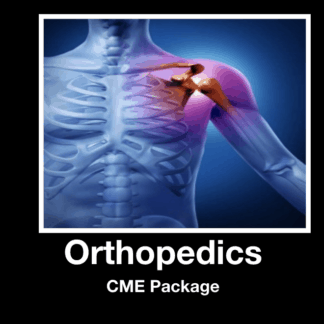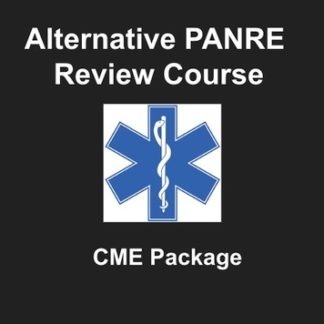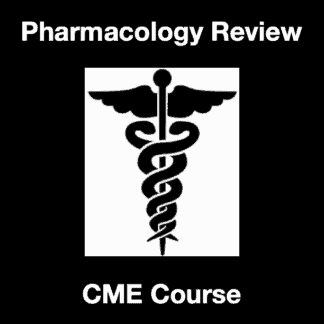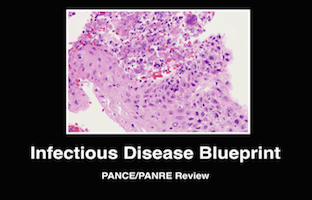Description
Genitourinary PANCE/PANRE Review Course and Lecture Video
This section is review of the Genitourinary Section for the NCCPA Blueprint topic list for the PANCE and PANRE. This section contains the Genitourinary Blueprint Lecture Video (0:53:56), as well as 104 Genitourinary Multiple Choice PANCE style questions, answers and detailed explanations. Lecture Slides are also included. This section will be continuously updated and you will be given access for 30 months.
This section is designed for physician assistants preparing to take the PANCE/PANRE. Medical students preparing for the USMLE and COMLEX may find this section helpful.
We do offer Category 2 CME with Amazon and Apple Gift Cards. Click here if interested in CME with Amazon and Apple Gift Cards
This is in a mobile friendly form.
Genitourinary Blueprint Preview Questions, Answers, and Detailed Explanations
Genitourinary Questions
Question 1
1. Your patient is a 45 year old male that present with right side flank pain, hematuria with nausea and vomiting. He states his pain radiates to his right testicle. His scrotal exam is unremarkable. His urinalysis reveals >200 RBC and no white cells or bacteria. His CT scan of his abdomen and pelvis reveals hydroureter and hydronephrosis without kidney stones seen. Which of the following is the most likely diagnosis?
A. Pyelonephritis
B. Calcium Struvite Kidney Stone
C. Uric Acid Kidney Stone
D. Calcium Oxalate Kidney Stone
Answer 1
1. Choice C is the correct answer. Uric Acid Stones are radiolucent. Another concerning possible cause would be a GU malignancy not seen on CT scan. If this patient does not pass a kidney stone, this patient needs a cystoscopy. Pyelonephritis produces perinephric stranding around the kidney on CT Scan. Calcium struvite and oxalate stones are radiopaque on CT scan.
Question 2
2. Your patient is a 15 year old male that presents with right lower quadrant tenderness that radiates to his testicles. He does has pain in the lower abdomen as well as in his right testicle. His pain started two hours ago after running a race in track. He also has nausea and vomiting. Which of the following is the best first test to order on this patient?
A. Abdominal ultrasound
B. Scrotal ultrasound
C. CT scan of abdomen and pelvis with 3 dose oral and IV contrast
D. 3 view abdomen x ray
Answer 2
2. Choice B is the correct answer. The onset of the pain was two hours ago. Testis necrosis starts to happen about 4-6 hours after the onset of pain. Time is testicle. There can be fertility issues reported in those that have to undergo an orchiectomy. The turnaround time on a 3 dose oral contrast would be 2 hours minimum and would not rule out a torsion. This patient may need this at some point but it is not the first appropriate test to order. Abdominal ultrasound may be appropriate to order if the patient does not have testicle pain. A 3 view abdomen x rays would be low yield in this case.
Question 3
3. Your patient is a 24 year old 12 week pregnant female that presents with dysuria and polyuria. Your patient’s urinalysis show the following WBC 50-75, Many Bacteria, and Nitrite positive. Which of the following treatment options is the most appropriate?
A. Macrobid 100 mg BID
B. Bactrim DS one PO BID
C. Cipro 500 mg BID
D. Doxycycline 100 mg BID
Answer 3
3. Choice A is the correct answer. Macrobid is safe and category B. Bactrim and Cipro are category C. Doxycycline is actually category D
Question 4
4. Your patient is a 30 year old male that has had left testicle pain for 2 weeks. The pain is alleviated when sitting and worse with standing. His urinalysis is essentially negative. Ultrasound of scrotum reveals left sided epididymitis. Which of the following is the most appropriate antibiotic regimen?
A. Rocephin 250 mg x1, plus Zithromax 500 mg PO daily for 10 days
B. Rocephin 250 mg x 1, plus cipro 500 mg BID for 10 days
C. Rocephin 250 mg x 1, plus flagyl 500 mg BID for 7 days
D. Rocephin 250 mg x 1, plus Doxycycline 100 mg BID for 10 days
Answer 4
4. Choice D is the correct answer. All men with epididymitis should be covered for gonorrhea and chlamydia. Rocephin provides excellent coverage for gonorrhea. Chlamydia is best covered in this situation with doxycycline 100 mg BID. While chlamydia is sensitive to Zithromax, ideally it should be given 1000 mg times one dose. There is a lot of resistance to cipro in terms of chlamydia. Flagyl is for trichomonas, not chlamydia.
Question 5
5. Your patient is a 21 year old female that presents with right flank pain, fever 102, dysuria, polyuria, with nausea and vomiting. Lab values are as follows WBC 11.4, and remainder of CBC is normal. BMP is normal. Urine reveals WBC 75-100, many bacteria, nitrite positive. Vitals are Temp 101, HR 97, BP 124/76, RR 20, Sat 100. The patient is comfortable and pain is under control. You have just given the patient Cipro 400 mg IV Piggyback. Which of the following regimens is most appropriate for this patient.?
A. Continue Cipro 400 mg IV Piggyback BID in Hospital awaiting cultures
B. Bactrim DS one PO BID for 7 days
C. Cipro 500 mg BID for 7 days
D. Cipro 500 mg BID for 14 days
Answer 5
5. Choice D is the correct answer. This patient has pyelonephritis. Patients with pyelonephritis need 10-14 days worth of antibiotics. This patient’s vitals are normal, labs are reassuring, and pain is under control and likely does not need to be admitted to the hospital. The other antibiotic choices are acceptable but are not long enough to treat pyelonephritis.
Question 6
6. Which of the following is not within the differential diagnosis of acute renal failure?
A. Volume depletion
B. Arterial occlusion
C. Kidney stone in solitary kidney
D. Hypocalcemia
Answer 6
6. Choice D is the correct answer. Hypocalcemia is not a cause of renal failure but can be a sequelae of it. PTH causes reabsorption of calcium in the convoluted tubule in the kidney and if, the kidneys are not functioning appropriately, this does not happen. Volume depletion and arterial occlusion are pre-renal causes. Kidney stone in solitary kidney is postobstructive cause.
Question 7
7. Nephrotic syndrome is defined as more than _______ grams in 24 hours.
A. 2.0
B. 2.5
C. 3.0
D. 3.5
Answer 7
7. Choice D is the correct answer. Nephrotic syndrome is considered greater than 3.5 grams in 24 hours. Hypoalbuminemia is considered less than 3.0 grams/dL.
Question 8
8. Your patient is a 14 year old female who has been complaining of lower abdominal pain and vomiting for the last 2 days. She has a history of IDDM. She was sent to you from urgent care because she was found to have a WBC of 21.4 and was sent for a CT scan of her Abdomen and Pelvis to rule out appendicitis. . Her urine and pelvic exam are negative for any evidence of infection. Her BMP is as follows Sodium 133, K 3.2, Cl 94, CO2, 13, BUN 25, Creatinine 0.5. Glucose 351. Her CT scan came back normal, and she able to tolerate PO fluids and her abdominal exam is essentially benign. Which of the following is the best management option?
A. Discharge the patient home her CT scan is normal and she can tolerate PO fluids
B. Admit the patient for IV fluids
C. Order a serum acetone and ABG
D. Consult a general surgeon, the patient has a high WBC and needs to be observed
Answer 8
8. Choice C is the correct answer. Diabetic ketoacidosis is still within the differential on this patient and needs to be considered. With a glucose over 250, abdominal pain, nausea, and vomiting, ketosis can be a culprit. The patient does not need a general surgery consult at this point, but needs to be admitted to the hospital for aggressive IV hydration and correction of the metabolic acidosis. This patient should not be discharged.
Question 9
9. Which of the following is not a cause of hypokalemia?
A. Increased Beta Adrenergic activity
B. Alkalosis
C. Increased insulin availability to the cells
D. Fever
Answer 9
9. Choice D is the correct answer. Hypothermia not fever can cause hypokalemia. Increase insulin availability to the cells can cause hypokalemia because taking glucose into the cell causes hypokalemia and drives it into the cell. It is one of the treatments of hyperkalemia. Alkalosis can cause hypokalemia because the cell is less permeable to keeping it inside when there is an acidic environment. Increased beta adrenergic activity can cause it. Albuterol is a treatment for hyperkalemia.
Question 10
10. Which of the following modalities is the best test to diagnose renal vascular disease?
A. Plasma renin
B. Renal angiography
C. MRA of renal arteries
D. Doppler Ultrasonography of the Kidneys and Renal Arteries
Answer 10
10. Choice B is the correct answer. Renal angiography is considered the gold standard for diagnosis of renovascular disease. Renal vascular disease should be considered a correctable cause of secondary hypertension. Plasma renin is only elevated 50-80 percent of the time in those with renal hypertension. MRA of the Renal Arteries and Doppler Ultrasonography of the kidneys and renal arteries are considered less sensitive modalities for diagnosis of renovascular disease.
